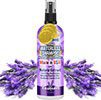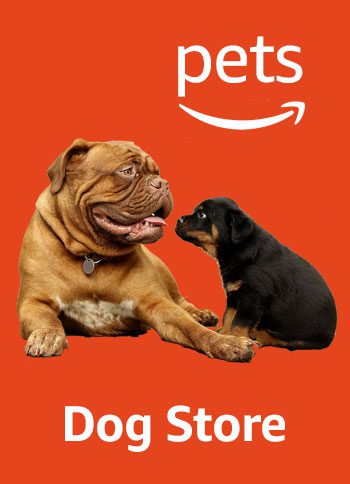Tear stains in dogs can be a bothersome cosmetic issue for many pet owners. These reddish-brown streaks that appear beneath a dog's eyes can detract from their adorable appearance and leave owners wondering about the underlying causes. While tear stains can be influenced by various factors such as genetics, tear duct problems, or allergies, there is evidence to suggest that certain foods may contribute to their development. In this article, we will explore some common culprits believed to cause tear stains in dogs and provide insights to help you manage this concern.
What Causes Tear Stains in Dogs?
Dog tear marks, also known as tear stains, can have various causes in addition to diet. Here are some factors that may contribute to tear marks in dogs:
- Tear duct problems. Some dogs may have congenital or acquired issues with their tear ducts, which can lead to excessive tearing. Blocked tear ducts or narrow duct openings can cause tears to overflow onto the fur, resulting in tear stains.
- Facial anatomy. Dogs with certain facial structures, such as brachycephalic breeds (e.g., bulldogs, pugs), often have shallow eye sockets, excessive skin folds or prominent eyes. These features can interfere with proper tear drainage, leading to tear stains.
- Conjunctivitis.
- Irritants. Irritants in the environment, such as dust, pollen, smoke or chemicals, can cause eye irritation and excessive tearing in dogs. The tears may contain substances that can stain the fur when they overflow.
- Abnormal eyelashes.
- Eyelids that turn inward (entropion).
- Eyelid abnormalities (ectropion).
- Epiphora. Epiphora is a condition characterized by excessive tear production and overflow. It can result from various underlying causes, including anatomical abnormalities, eye infections, allergies or even teething in puppies.
- Teething. Puppies that are teething may experience excessive tearing due to the increased sensitivity in their eyes. The tears can mix with saliva as they chew and lick, resulting in tear stains around the mouth.
- Stress or anxiety. Dogs experiencing stress or anxiety may produce more tears than usual. This can be observed during unfamiliar situations, separation anxiety or in response to loud noises or other stressors.
While tear stains in dogs can have various causes, the role of diet should not be underestimated. Artificial food additives, high-iron foods, allergenic ingredients, excessive tear production and poor-quality water have all been implicated in the development or worsening of tear staining in dogs.
What Foods Cause Tear Stains?
1. High-Iron Foods
Foods rich in iron, such as red meats and some dark leafy vegetables, have been linked to tear staining in certain dogs. Iron can oxidize and lead to the formation of reddish-brown pigment, which becomes more apparent in the tears that collect beneath the eyes. If your dog is prone to tear stains, you might consider moderating the intake of high-iron foods or consulting with your veterinarian to find an appropriate dietary balance.
What foods are high in iron?
- Animal liver. Liver is rich in various nutrients and is the food of choice for preventing iron deficiency anemia. Pork liver contains 25 mg of iron per 100 grams, and is also more easily absorbed by dogs.
- Various lean meats. Although the iron content in lean meats is not too high, the iron utilization rate is similar to that of pork liver, it is easy to buy and process, and dogs like to eat it.
- Egg yolk. Eggs yolks contain 7 mg of iron per 100 grams of yolk, although the absorption rate of iron is only 3%. The raw egg materials are easy to obtain, easy to eat and save, and also rich in other nutrients, so it is a better iron food.
- Soybeans and their products. Soybeans and soybean flour contain 11 mg of iron per 100 grams, with a pet absorption rate of 5%, much higher than the absorption rate of iron in rice and flour.
- Sesame paste. Sesame paste is rich in various nutrients and is an excellent nutritional food. Sesame paste contains 58 mg of iron per 100 grams, and is also rich in calcium, phosphorus, protein and fat.
- Green leafy vegetables. Although the absorption rate of iron in plant foods is not high, vegetables are also a source of supplemental iron.
2. Food Allergens
Food allergies can manifest in various ways and tear staining is one potential symptom. Common allergenic foods for dogs include wheat, soy, corn, dairy products and certain proteins like chicken or beef. When a dog consumes an allergenic food, it can trigger an immune response, leading to tear stains, among other symptoms. If you suspect a food allergy, consider conducting an elimination diet under the guidance of a veterinarian to identify and eliminate the problematic ingredient.
3. Artificial Food Additives
Artificial food additives, including artificial coloring agents, can trigger tear stains in dogs. Many commercially available dog foods contain artificial dyes such as Red 40 and Yellow 5, which have been associated with increased tear staining. These dyes are commonly found in treats, kibble and canned foods. Opting for natural and minimally processed foods can help reduce the likelihood of tear stains caused by artificial additives.
4. Poor-Quality Water
Believe it or not, the quality of water your dog consumes can also influence tear staining. High mineral content or impurities in tap water can contribute to tear staining in susceptible dogs. Consider using filtered or distilled water for your dog's drinking needs, as it can help reduce the minerals and impurities that might exacerbate tear stains.
Prevention and Treatment for Tear Stains in Cats and Dogs
Regular Eye Cleaning
Clean your pet's eyes gently on a daily basis using a veterinarian-approved eye wash or saline solution. This helps remove excess tears and debris, reducing the chances of tear staining.
Maintain Good Hygiene
Keep the area around your pet's eyes clean and dry. Trim the fur around the eyes regularly to prevent tears from soaking into the fur.
Use Specially-Formulated Shampoos
To remove existing tear stains, choose specially-formulated dry shampoos or waterless shampoos. These products offer better control, are gentler on sensitive eyes and reduce the risk of irritation.
Supplements To Help Remove Tear Stains
It is well known that most pet and even human diets are deficient in omega 3 fatty acids. High-quality fish oil produced to strict standards can be effective in reducing inflammation. In addition, human studies have shown the beneficial effects of essential fatty acid supplementation in addressing eye problems. To ensure the highest quality, choose concentrated fish oil, pay attention to the production process and prevent the consumption of poor quality fish oil containing heavy metals.
Diet Treatment
Fresh Water
Ensure your pet has access to clean, fresh water at all times. Proper hydration helps maintain healthy tear production and overall eye health.
Reduce or Eliminate High-Carb Snacks
Choose freeze-dried meat, jerky and chews instead of crackers. Most pet crackers contain little or no meat and are replaced with ingredients such as flour, cassava, molasses, maple syrup, potatoes and other starches and sugars. These directly affect the amount of inflammation in the body.
Other Treatments
Tear Duct Flushing
In cases where tear duct blockage or narrow openings are causing excessive tearing, your veterinarian may recommend tear duct flushing or probing to open up the ducts and improve tear drainage.
Surgical Intervention
For certain structural issues like entropion (inward-rolling eyelids) or ectropion (outward-rolling eyelids), surgical correction may be necessary to alleviate the tear staining.
Medications
In some cases, your veterinarian may prescribe medication to address specific eye conditions or reduce tear production. These may include antibiotic ointments for infections, anti-inflammatory drugs for allergies or tear stimulants to improve tear drainage.
Conclusion
If your dog is experiencing persistent tear stains or if you have concerns about their health, it is always recommended to consult with a veterinarian. They can provide tailored advice, address any underlying health issues and guide you in developing a suitable dietary plan to minimize tear staining in your beloved canine companion.







